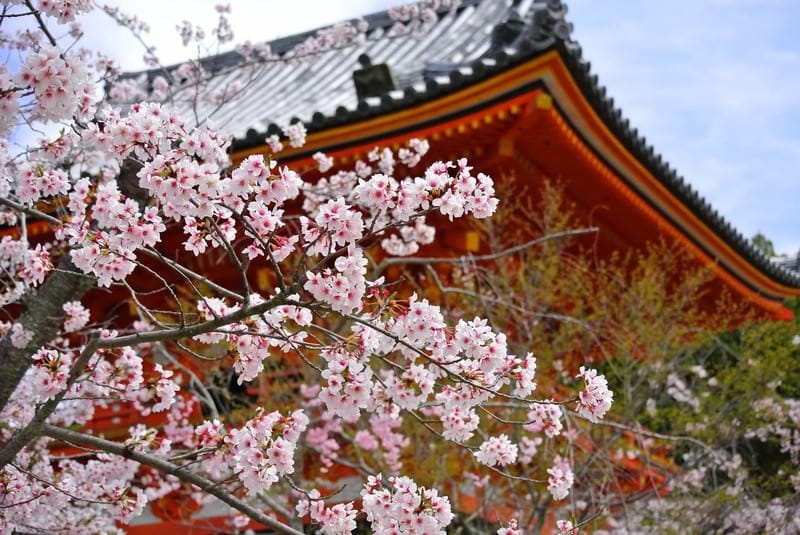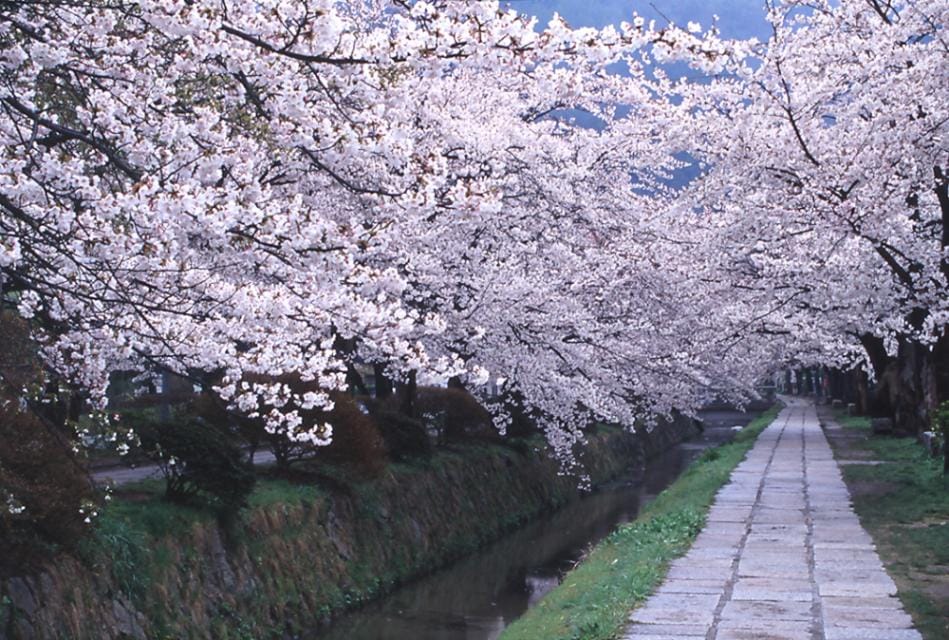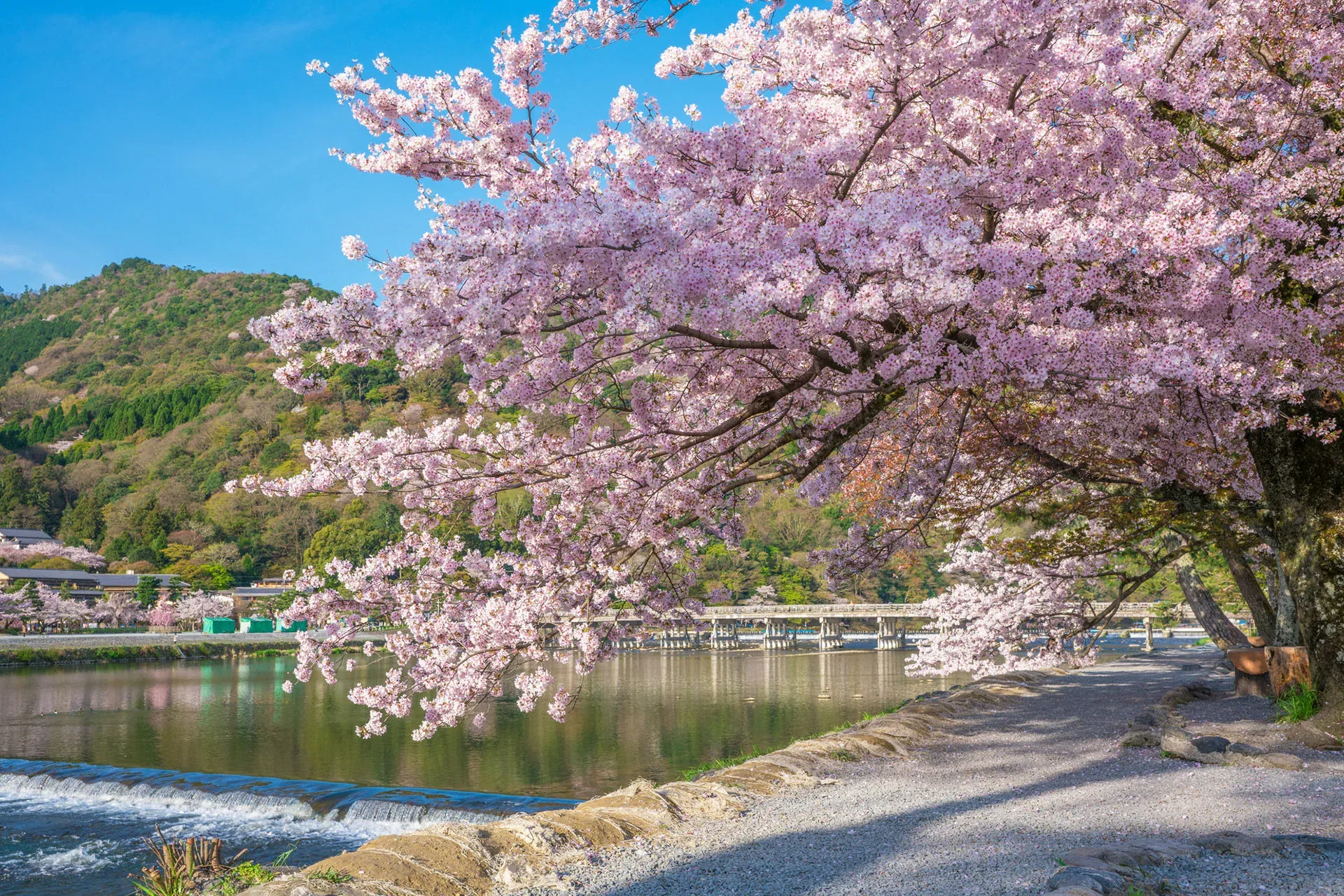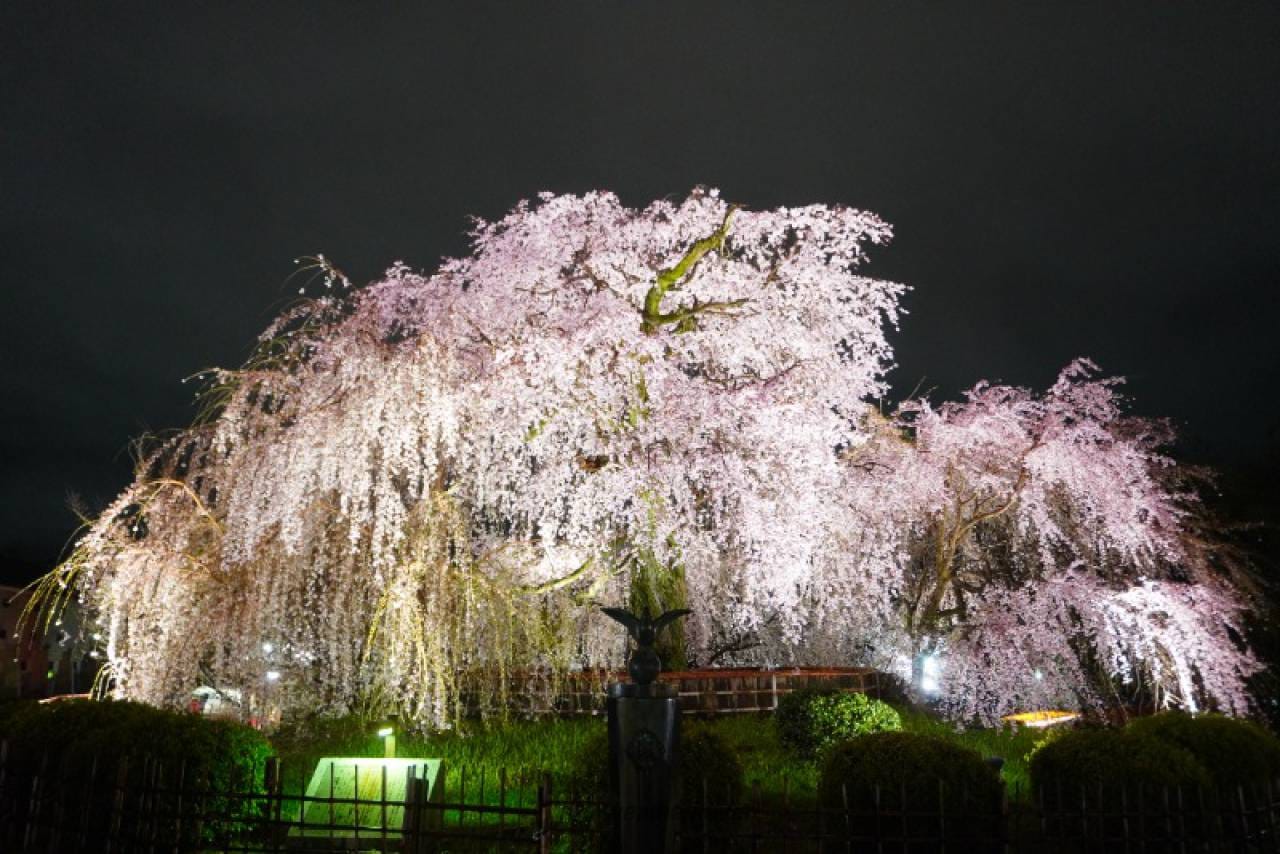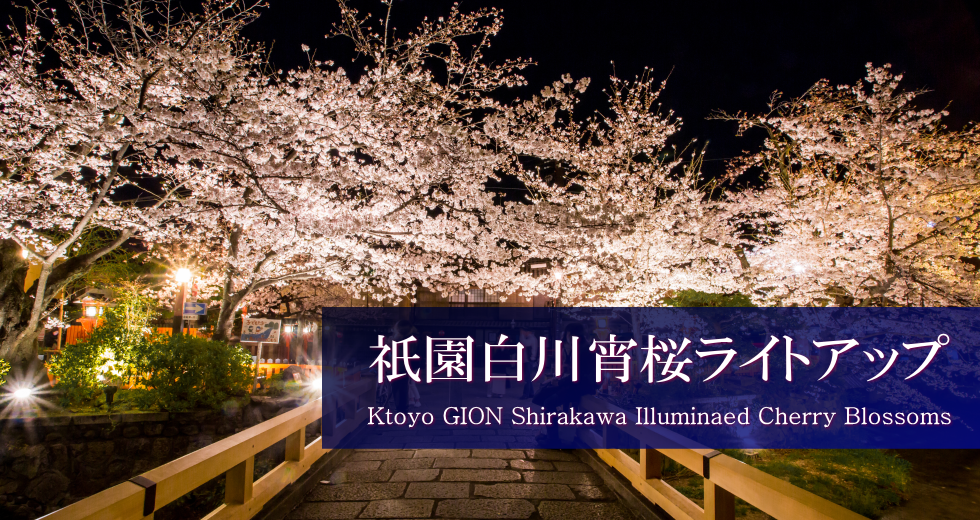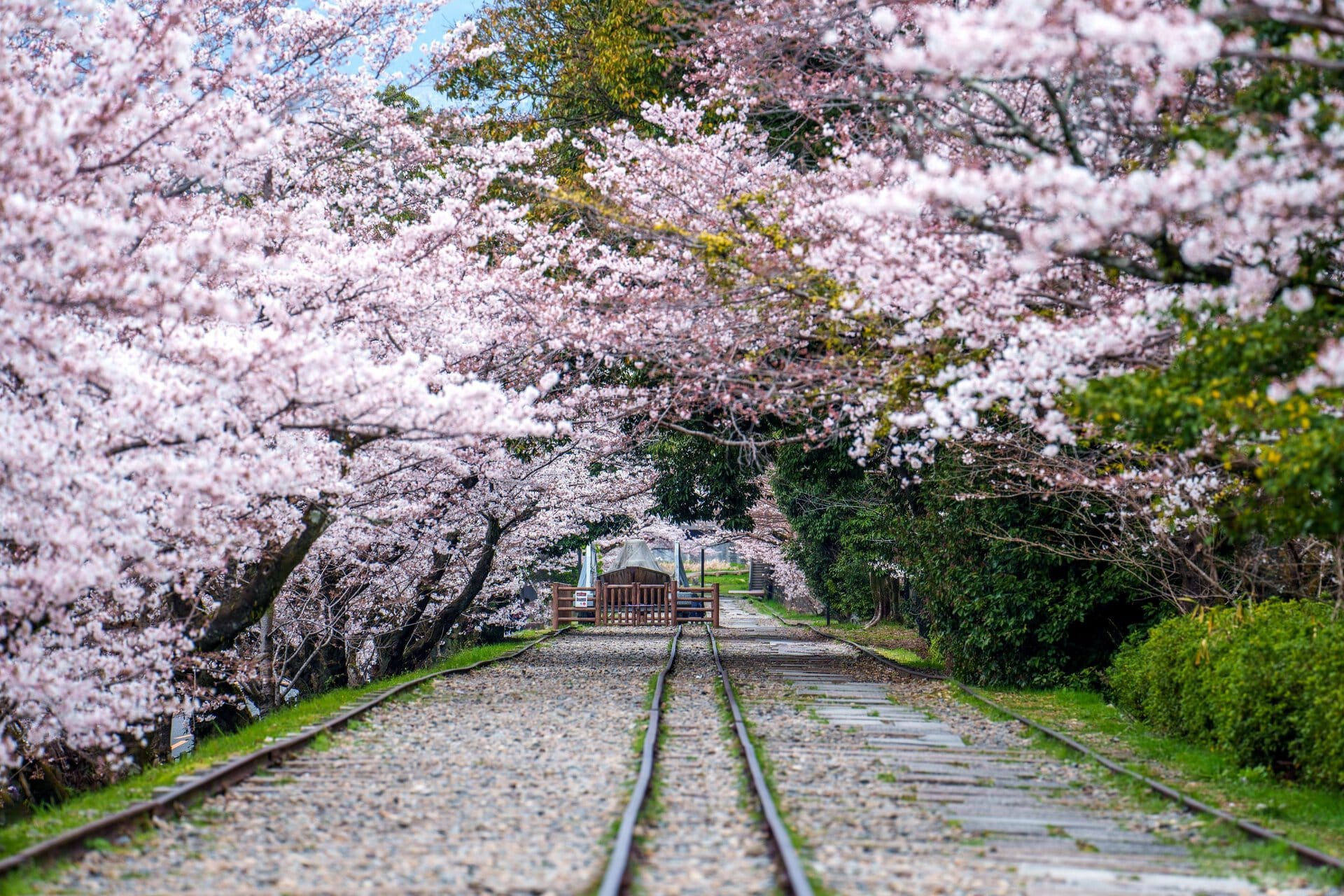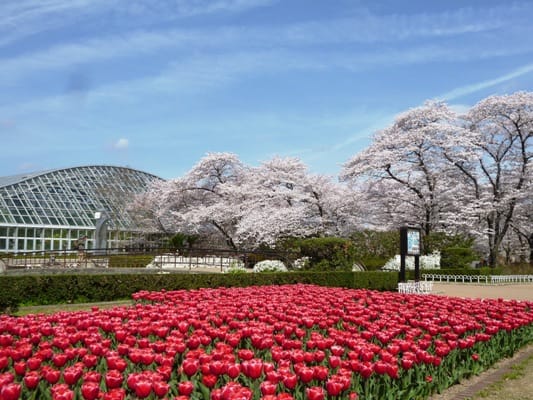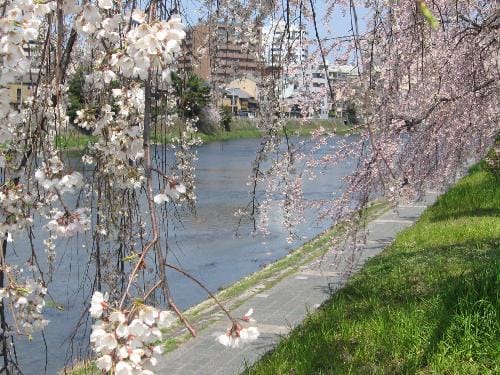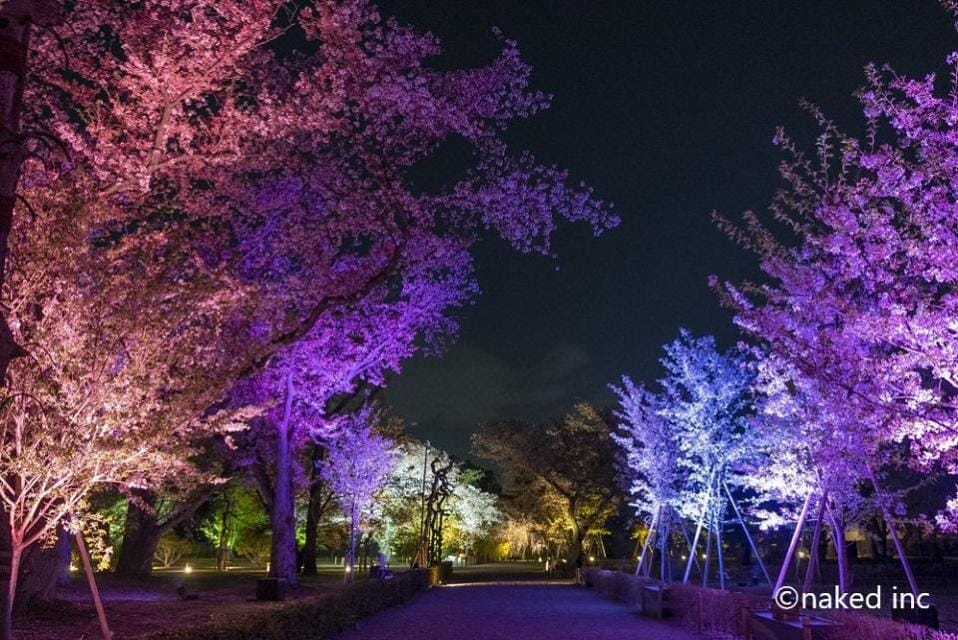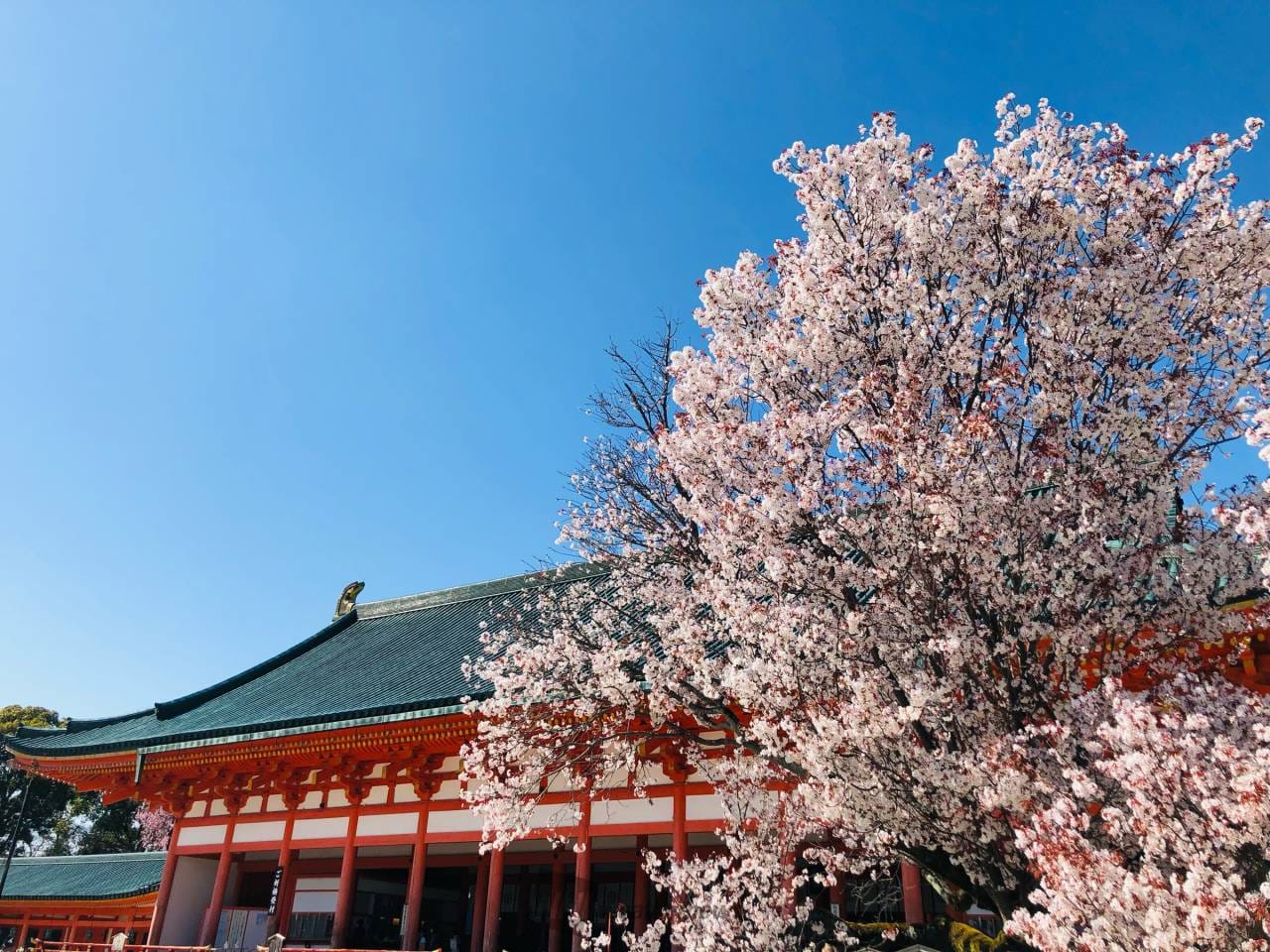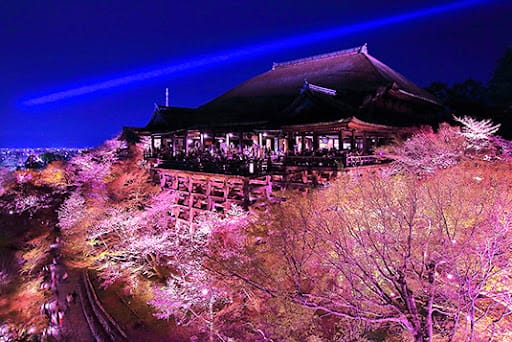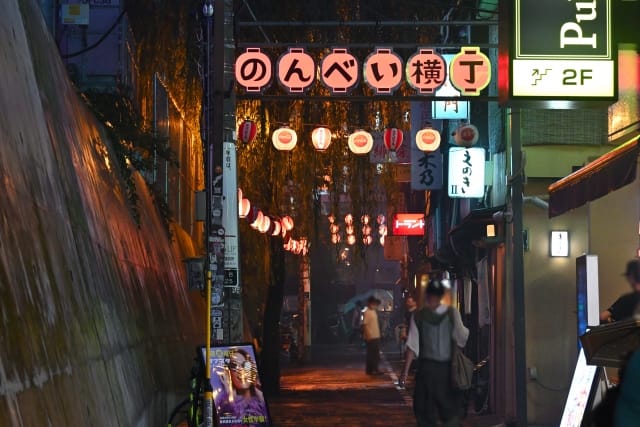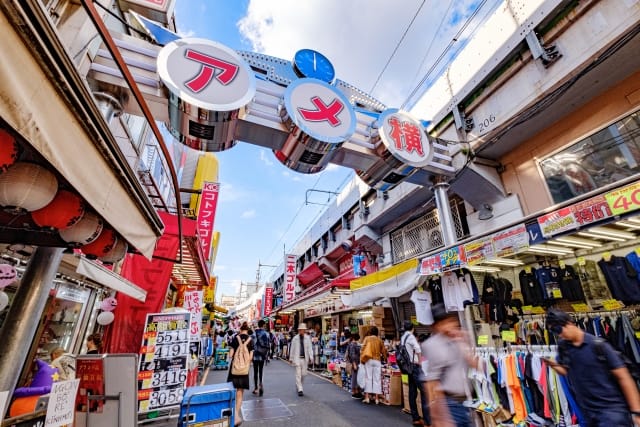Kyoto's Cherry Blossoms: 10 Best Sakura Spots 2025
I visited Kyoto several times between August and October 2024. I'm updating this article to share the new charms of Kyoto I discovered and to recommend the latest spots worth visiting. In this update, I've also included the newest information about Kyoto for 2025.
Another reason for this update is the growing interest in tours that allow visitors to fully experience Kyoto's traditions and culture.
Due to Kyoto's deep history and traditions, first-time visitors often find it challenging to explore the city efficiently while gaining a deeper understanding. This has led to increasing popularity of guided tours like those offered by Magical Trip, where local guides help tourists navigate the city.
Notably, Magical Trip's tour, which was ranked No.1 among all tours on Tripadvisor in 2024, is experiencing high demand in 2025.

・Kyoto Arashiyama Bamboo forest & Garden Half-Day Walking Tour
・Fushimi Inari Hidden Hiking Tour
・1-Day Kyoto UNESCO World Heritage Site Tour with a Private Car and Guide
・4.5-hour Kyoto Historical Highlights Bike Tour with UNESCO Zen Temples
Whichever tour you choose, it's sure to be an unforgettable experience!
Introduction
Kyoto is a representative tourist city of Japan with many historical buildings. Kyoto was the capital for over 1000 years before Tokyo became the capital, and there are numerous buildings that strongly reflect Japan's history during that time. Everywhere you can feel an atmosphere brimming with Japanese virtues, a city overflowing with Japan's subtle elegance.
I'm from Osaka and often have the opportunity to visit Kyoto. When I go to solemn places like temples, I feel my mind cleansed and very refreshed.
Kyoto is also famous for showing different expressions according to Japan's four seasons. The scenery of streets, temples, and shrines adorned with cherry blossoms and autumn leaves is breathtaking. This time, I'll introduce spots you should definitely visit during the cherry blossom season.
Related Article
・Kyoto in March 2025: Early Spring Highlights, Events & Festivals
This article introduces not only cherry blossom spots in Kyoto but also traditional events that have continued for many years in Kyoto. It's a must-read for anyone interested in Japanese culture!
・Kyoto in April 2025: Highlights, Events & Festivals
In Kyoto during April, you can enjoy the beautiful collaboration of cherry blossoms and traditional buildings. In this article, I will introduce events where you can experience my especially recommended combinations of cherry blossoms with shrines and temples.
Spring is the Recommended Season for Tourism When Kyoto's Streets are Filled with Cherry Blossoms
Kyoto's beautiful cityscape exudes an even more gentle atmosphere when spring arrives. The cherry blossoms blooming around the streets, historical buildings such as temples and shrines, and gardens add further color to the traditional cityscape.
While the daytime cherry blossom scenery is vibrant and symbolizes Kyoto's beautiful spring, the cherry blossoms illuminated by special lighting in a solemn atmosphere at night are truly spectacular. The period to fully enjoy cherry blossoms is about 1-2 weeks, and the blooming time varies each year depending on the climate. Recently, the best viewing time is often 1-2 weeks from late March to early April.
I hope you can experience Kyoto in full cherry blossom bloom.
7 Tourist Spots Adorned with Cherry Blossoms You Must Visit in Spring
Philosopher's Path
The first spot to enjoy cherry blossoms in Kyoto is the "Philosopher's Path". Actually, there are many famous universities in Kyoto. This path is famous as a place where various scholars used to stroll in their youth, hence the name.
Selected as one of the "100 Roads of Japan", about 400 cherry trees bloom magnificently along the approximately 2km path. The dynamism and beauty at full bloom are breathtaking, making it one of the most famous cherry blossom spots in Kyoto.
The scene of cherry blossom petals dancing and floating on the water flowing from Lake Biwa, Japan's largest lake, has an elegant atmosphere that makes you feel Japan's refinement, allowing you to gaze peacefully for hours.
Access from Kyoto Station is as follows:
Take City Bus 17, 5, or 100 and get off at "Ginkakuji-mae" or
Take City Bus 5 and get off at "Nanzenji Eikando-mae" - Right there
Arashiyama
source:caede japan
Arashiyama, which I'll introduce next, maintains a unique beautiful landscape created by "river", "bridge", and "mountain", and is a spot that never loses popularity. I used to go there often during my student days.
The Arashiyama area is wide, and you can enjoy cherry blossoms everywhere, starting with the view from "Togetsukyo Bridge", which is the symbol. There are multiple types of cherry blossoms, and after the famous Somei Yoshino reaches full bloom, late-blooming weeping cherry and mountain cherry blossoms open, so you can enjoy cherry blossoms for a relatively long period.
The "Araden Night Cherry Blossom Train" is also a spectacular tourist spot you should definitely see. The tunnel of illuminated cherry blossoms is a precious view that can only be seen from here.
Access from Kyoto Station is as follows:
Take the Keifuku Electric Railroad Arashiyama Main Line to "Arashiyama Station" or
Take JR to "Saga-Arashiyama Station" - Right there
During cherry blossom season, Arashiyama becomes crowded with tourists. If you want to efficiently visit tourist attractions and deeply enjoy beautiful spots, try joining an Arashiyama tour guided by a local expert who knows the area thoroughly.
Tours tend to fill up quickly during cherry blossom season, so we recommend making reservations early.
Tour details: Kyoto Arashiyama Bamboo forest & Garden Half-Day Walking Tour
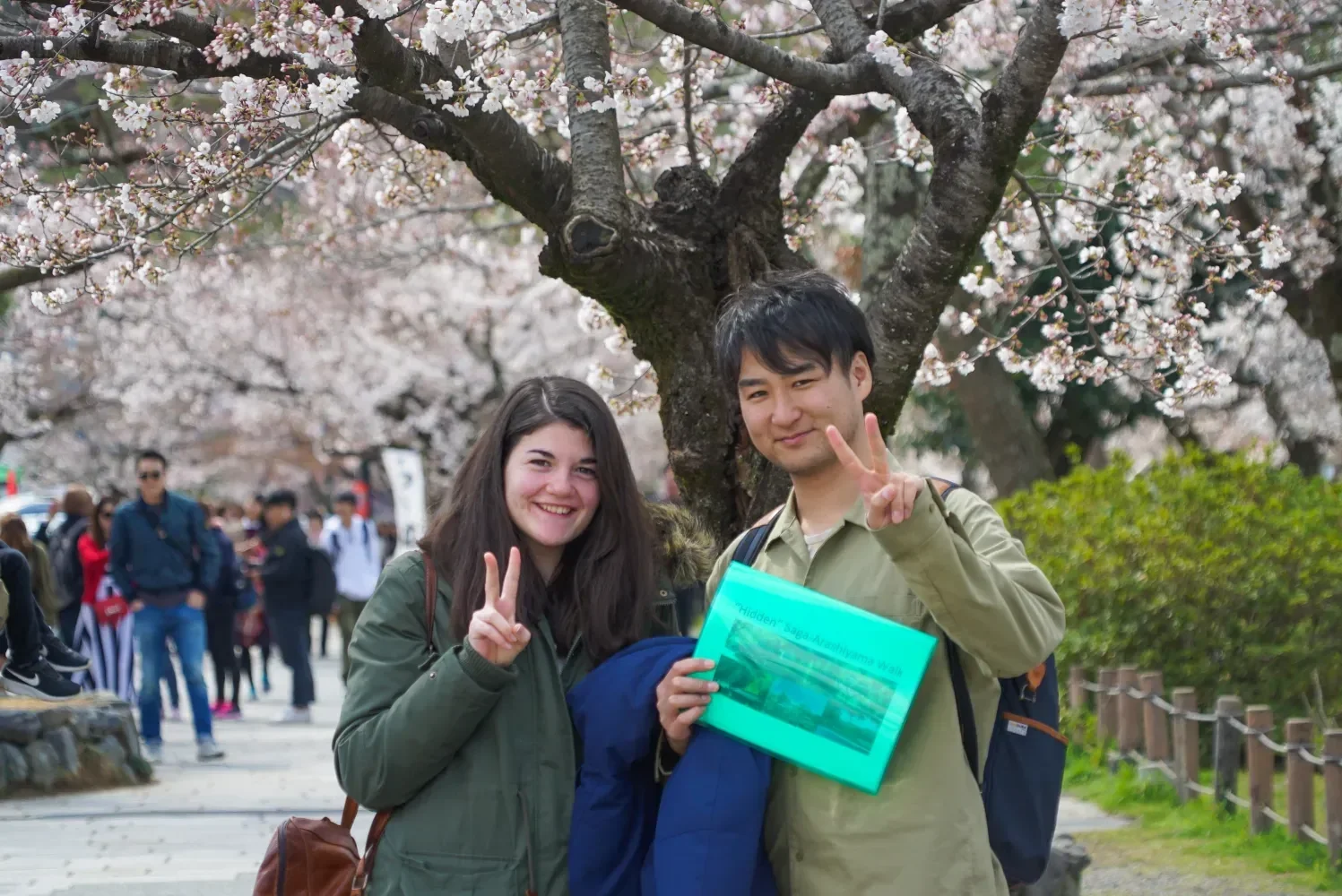
If you are interested in Arashiyama Area, check the article below! I summarized how and where you can enjoy Arashiyama as much as possible.
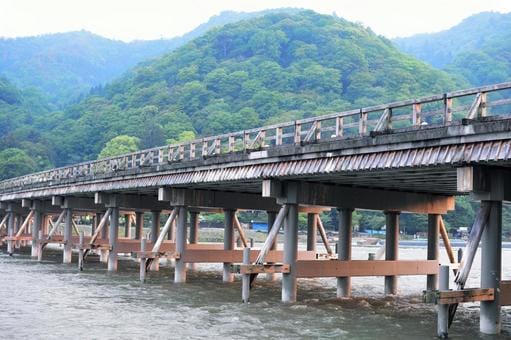
Maruyama Park
source:Weather News
Maruyama Park, the oldest park in Kyoto city, is also one of the cherry blossom spots.
In Maruyama Park, the weeping cherry tree, which has thin branches drooping downwards giving the impression of cherry blossoms dancing down, is famous for its special charm. The cherry tree in the center of the park is called the "Weeping Cherry of Gion" and is often listed as a must-see spot during cherry blossom season.
Especially after sunset (from around 6 PM to midnight), its illuminated appearance is extremely fantastical. It's so wonderful that you might forget time, a sight you should see at least once in your lifetime.
In the vast grounds of Maruyama Park, which also serves as a relaxation spot for locals, you can catch a glimpse of the life of Kyoto people.
Access from Kyoto Station is as follows:
Take City Bus 100/206 line and get off at "Gion" station - Right there
Gion Shinbashi Street
source: Official website
Gion is one of the bustling areas characterized by Kyoto-like streetscapes, famous for having many shops where maiko and geiko work. "Shinbashi Street", the northernmost street in the Gion area, is characterized by its Kyoto-like streetscape and is said to be the most Gion-like atmospheric area. The name Shinbashi (New Bridge) comes from the new bridge built over the Shirakawa River that flows in this area.
This area, including the vicinity of Shirakawa, is designated as an "Important Preservation District for Groups of Traditional Buildings" as an area that preserves the history of Kyoto from ancient times. I nostalgically remember wearing a kimono and strolling around this area in the past. The cherry blossoms are needless to say wonderful, with 40-50 trees of multiple types of cherry blossoms including Somei Yoshino, mountain cherry, and weeping cherry blooming along the road, symbolizing the gorgeousness of Kyoto and Gion. Don't miss the night illumination.
Access from Kyoto Station is as follows:
Take City Bus 100/206 line and get off at "Gion" station - Right there (about 5 minutes walk)
If you are interested in Gion Area, check the article below! I summarized how and where you can enjoy Gion as much as possible.
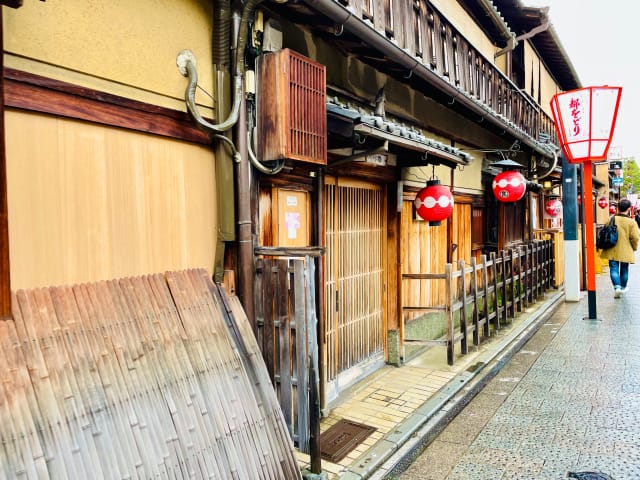
Keage Incline
source:WALKER PLUS
The Keage Incline was the world's longest inclined railway connecting the upper and lower streams of the Lake Biwa Canal, Japan's largest lake. It was built in 1891 to operate ships on a steep slope with a height difference of about 36 meters. It completed its work in 1948 and is now a cultural property of Kyoto City as its remains.
Cherry trees are planted on both sides of the tracks, so you can enjoy full-bloom cherry blossom rows in spring. The cherry blossom tunnel within the tracks is very gorgeous and atmospheric. Trolleys are placed in the upper and lower parts to recreate the image of that time, and their appearance with cherry blossoms in the background gives a somewhat lonely atmosphere and a Kyoto-like feeling.
Access from Kyoto Station is as follows:
Take the Subway Tozai Line to "Keage" station - About 10 minutes walk
If you are interested in Keage Incline, check the article below! I summarized in more details and how I felt there.
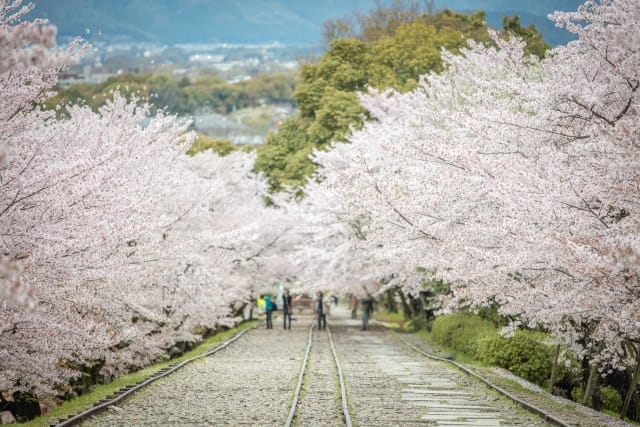
Kyoto Botanical Gardens
source:Kyoto Prefecture
The Kyoto Botanical Gardens is a botanical garden operated by Kyoto Prefecture. Established in 1924, it has been operating for about 100 years and is Japan's oldest public botanical garden. The garden is very large at about 240,000 square meters, and it takes 2-3 hours to go around all of it, making it a very substantial facility.
Various types of plants bloom according to Japan's seasons and can be enjoyed all year round, but the cherry blossom season in spring is especially exceptional. About 500 cherry trees of about 180 different varieties bloom in a well-balanced manner, overwhelming viewers.
You can enjoy scenery colored by many types of flowers unique to a botanical garden, with cute flowers like tulips and camellias blooming nearby.
Access from Kyoto Station is as follows:
Take the Subway Karasuma Line to "Kitayama" station - Right at Exit 3
Kamo River
source:Kyoto Prefecture
The Kamo River is a river about 27 km long flowing from north to south in Kyoto. It flows east of Heian-kyo, which was the emperor's residence. When Heian-kyo was established, guardian deities were designated for the east, west, north, and south, and the Kamo River was a very important existence as the guardian deity of the east. It was also used as domestic water and fishing grounds, and is an indispensable river for Kyoto's history and culture so far.
Cherry blossoms can be viewed everywhere, but red weeping cherry trees are planted especially from Kitayama Ohashi Bridge to Kitaoji Bridge. Walking under the weeping cherry trees that form a tunnel while viewing the Kamo River is an experience unique to Kyoto.
Even now, the Kamo River is a place of relaxation for people living in Kyoto, and I too spent long hours enjoying conversations with friends by the Kamo River during my student days.
In Japan, spring is the season when the new fiscal year begins. I recommend enjoying cherry blossoms, which symbolize the beginning of the year, at the Kamo River.
Access from Kyoto Station is as follows:
Take City Bus 4, 17, 205 line and get off at "Shijo Kawaramachi" station - Right there or
Take the Subway Karasuma Line, transfer at "Shijo" station, get off at "Kawaramachi" station - About 5 minutes walk
If you're visiting Kyoto, why not also enjoy the breathtaking cherry blossom spots in neighboring Nara Prefecture? You can immerse yourself deeply in Japanese culture by experiencing Nara Park, where you can enjoy cute deer alongside cherry blossoms, and by savoring traditional spots with hundreds of years of history that are among Japan's finest.
Tours tend to fill up quickly during cherry blossom season, so we recommend making reservations early.
Tour details: 1-Day Kyoto & Nara Day Trip Highlights Tour with a Private Car and Guide
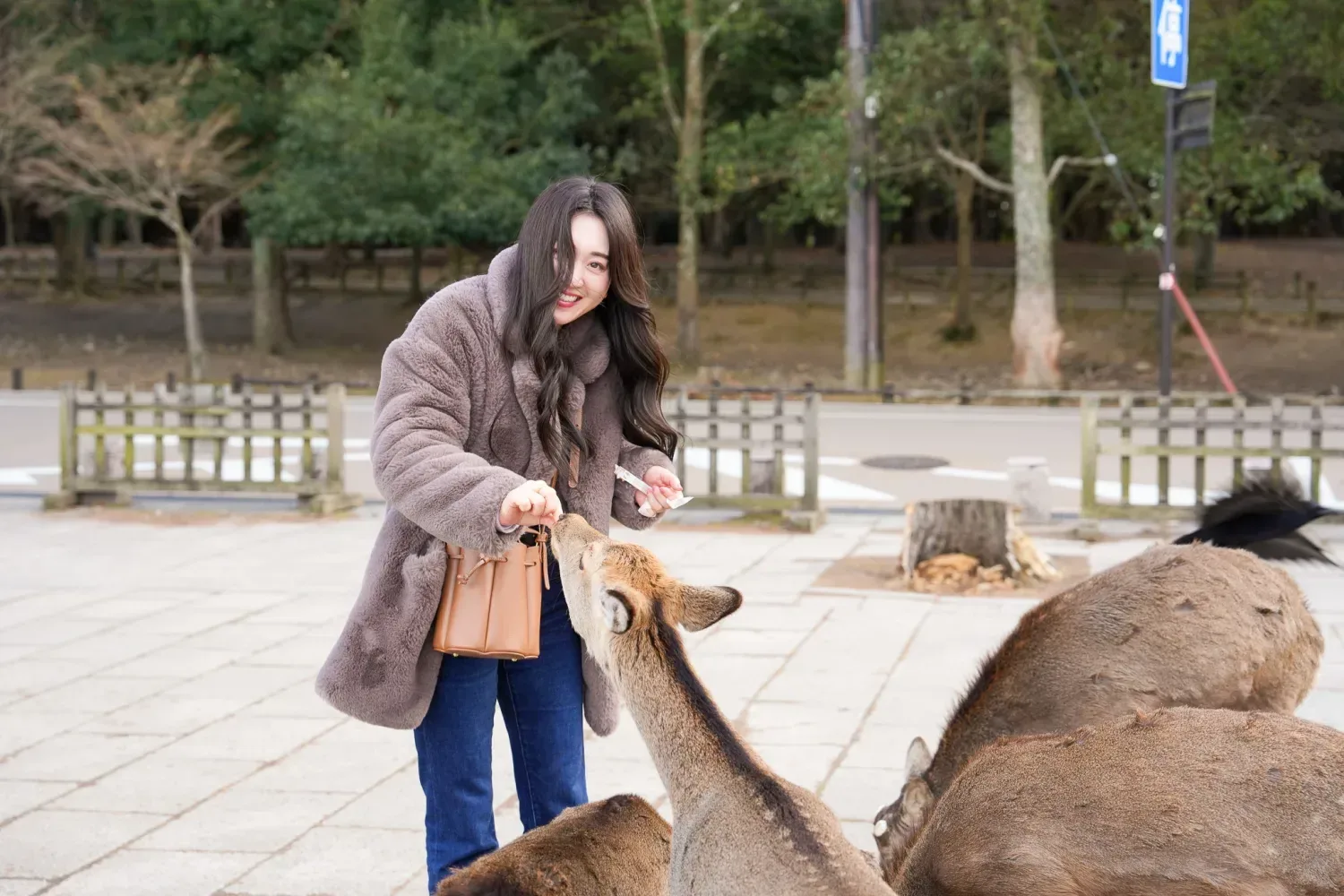
3 Spots Where You Can Enjoy the Collaboration of Kyoto's Traditional Buildings and Cherry Blossoms
Nijo Castle
Tokugawa Ieyasu is one of the important historical figures in Japan. He was the shogun who carried out nationwide rule in "Edo", the predecessor of today's Tokyo, and developed Edo. The current Nijo Castle is a very important castle built by Tokugawa Ieyasu in 1603 as a guard for the Kyoto Imperial Palace, where the emperor resided, and as a lodging when he came to Kyoto. It is also registered as a UNESCO World Heritage Site.
About 300 cherry trees of about 50 varieties are planted in Nijo Castle, and a cherry blossom festival is also held during the cherry blossom season. Because different types of cherry blossoms reach full bloom at different times, you can enjoy various cherry blossoms in turn for about a month during the cherry blossom season. At night, there are also projection mappings and cherry blossom illuminations, so you should definitely enjoy both daytime and nighttime!
Access from Kyoto Station is as follows:
Take City Bus 9, 50 line and get off at "Nijo-jo" station - Right there
Take the Subway Karasuma Line, transfer at "Karasuma Oike" station, get off at "Nijojo-mae" station - Right there
If you are interested in Nijo Castle, check the article below! I summarized in more details and how I felt there.
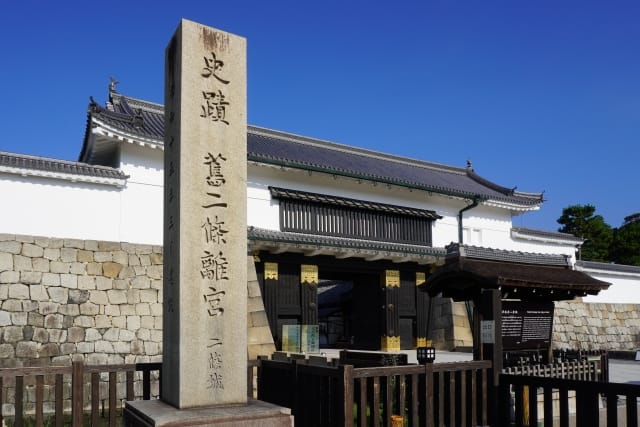
Heian Shrine
source:Weather News
The harmony of Heian Shrine and cherry blossoms is also a spot you should definitely see. Heian Shrine is a shrine built in 1895 to commemorate 1100 years since the capital was moved to Kyoto. It's a shrine that history lovers would want to visit at least once, with a garden that abundantly uses techniques cultivated over more than 1000 years of Kyoto's history, and the imposing vermilion main hall that is the symbol of Heian Shrine.
The cherry blossoms at Heian Shrine are mainly vivid red weeping cherry blossoms. The harmony between the buildings, garden, and red cherry blossoms is indescribably beautiful and powerful, taking your breath away. You can also enjoy night cherry blossoms.
The best viewing time changes every year, so please check the official website.
Access from Kyoto Station is as follows:
Take City Bus 5, 100, 110 line and get off at "Okazaki Koen Bijutsukan Heian Jingu-mae" station - Right there
If you are interested in Kyoto's Best Temples and Shrines, check the article below! I summarized Kyoto's Best Temples and Shrines I recommend and how I felt each Temples and Shrines.

Kiyomizu-dera Temple
source:imamiya.jp
The cherry blossoms at the World Heritage Site Kiyomizu-dera Temple, which is said to be the most standard Kyoto sightseeing spot, are not to be missed. Kiyomizu-dera Temple was built in 778 and is one of the "Cultural Assets of Ancient Kyoto". The main hall built on a sharp cliff is also called the "Kiyomizu Stage". The view is spectacular whether seen from below or looking down from inside.
There are as many as 1500 cherry trees planted around Kiyomizu-dera Temple. The view of cherry blossoms surrounding Kiyomizu-dera Temple and the overwhelming view of cherry blossoms looking down from Kiyomizu-dera Temple are spectacular sights.
The night viewing is also very fantastical, with the cherry blossoms inside the temple illuminated. Once you go, it will surely become an unforgettable memory.
Access from Kyoto Station is as follows:
Take City Bus 86, 106, 110, 206 line and get off at "Kiyomizu-michi" or "Gojo-zaka" station - About 10 minutes walk from each spots.
If you are interested in Kiyomizu Dera Temple, check the article below! I summarized in more details and how I felt there.

Tours with Local Guides are Also Recommended for Enjoying Cherry Blossom Spots
When enjoying cherry blossom spots, tours with local guides are recommended.
Kyoto is extremely crowded during the cherry blossom season. It often takes more time than expected to move around and sightsee, and it's common to "not be able to go to all the places you wanted to go".
Especially during seasons like cherry blossom season, I recommend leaving it to professional guides to go around efficiently!
Kyoto Arashiyama Bamboo Forest & Garden Half-Day Walking Tour

I'd like to recommend a tour by professional guides especially for the cherry blossom season.
In this tour, guides who are well-versed in Kyoto's geography and tourist spots will guide you not only to famous spots including Arashiyama, which I introduced earlier, but also to hidden spots that aren't in guidebooks.
One of the main spots, the World Heritage Site Tenryu-ji Temple, has a magnificent and beautiful garden, and especially in spring, the view of cherry blossoms blooming around the pond is spectacular.
After enjoying the area around Tenryu-ji Temple, you'll also visit the bamboo grove. This area used to be a villa area for nobles, and the sunlight filtering through the bamboo on sunny days is very pleasant.
There's also commentary on Kyoto's profound history, so you can enjoy Kyoto sightseeing more deeply.
4-hour Kyoto Historical Highlights Bike Tour with UNESCO Zen Temples
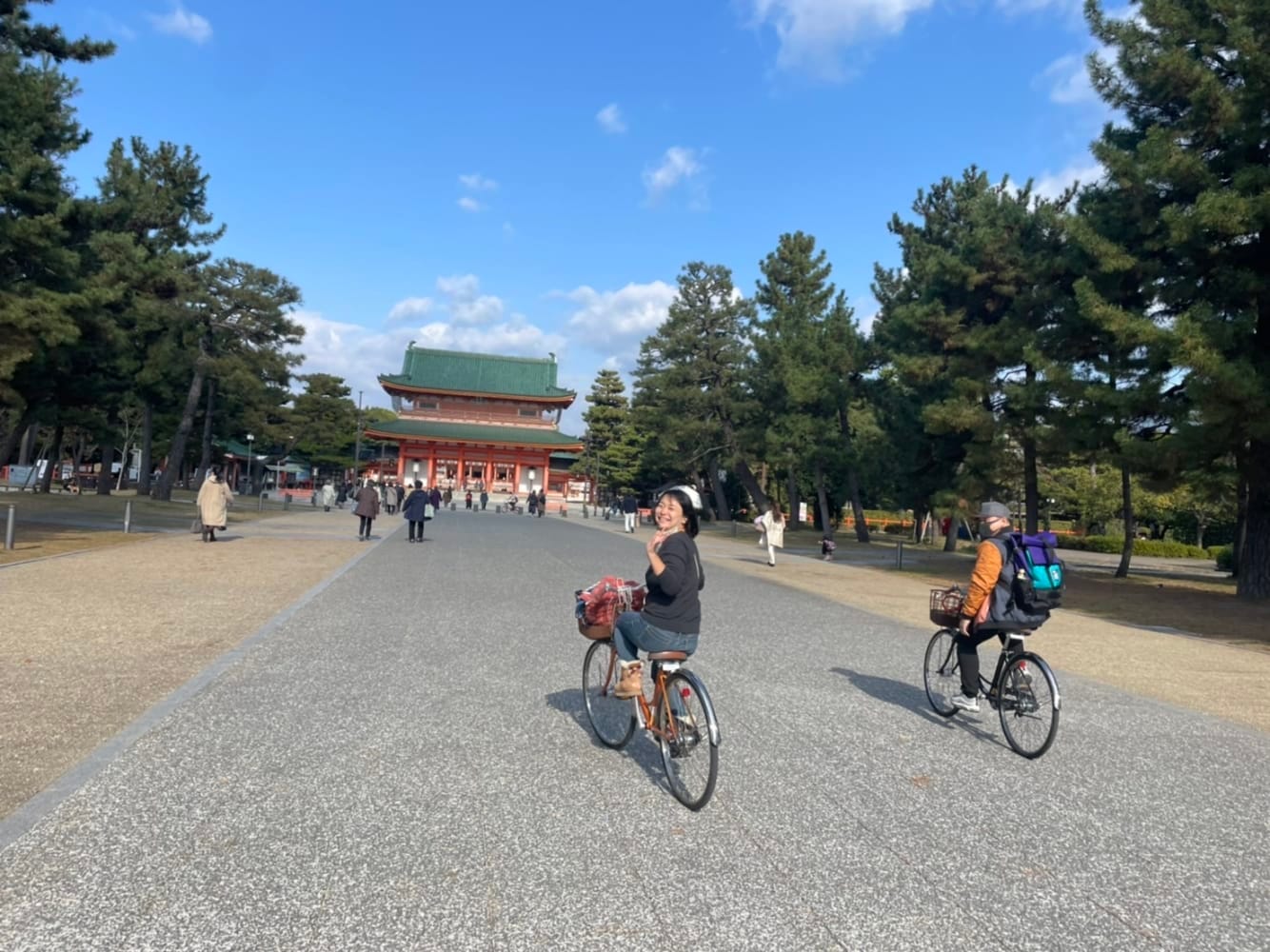
For exploring Kyoto, a guided bicycle tour is also recommended!
Although the bus network is well-developed in Kyoto, it's very crowded and sometimes traffic jams occur, so it's not exceptionally convenient.
On the other hand, as Kyoto is not that large as an area, sightseeing in Kyoto by bicycle is also one of the most efficient ways to tour.
This tour starts from around Hanami-koji Street and allows you to efficiently go around Kyoto's tourist spots! Why not try riding a bicycle around Kyoto comfortably while listening to episodes about tourist spots unique to guides who are familiar with Kyoto, from famous World Heritage Sites to hidden spots?
It takes about 3.5-4 hours, and in spring, you'll visit the cherry blossom spots introduced in this article.
If you are interested in Walking Tours, check the article below! I summarized how and where you can enjoy Walking Tours as much as possible.

Points to Note When Visiting Cherry Blossom Spots
Kyoto is always crowded, but it's more crowded than usual during the cherry blossom season. I recommend trying to avoid crowded times as much as possible, such as visiting early in the morning.
If you're strolling in a kimono, it's better to avoid walking as much as possible and participate in tours with taxis or pick-up services. Kimonos are difficult to walk in even for Japanese people. Try to devise ways to enjoy fully without getting too tired.
To protect Kyoto's scenery and culture, please follow rules and manners. Especially at shrines and temples, there are special rules, so I recommend checking in advance.
